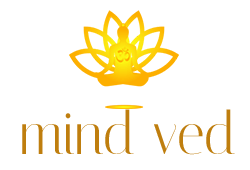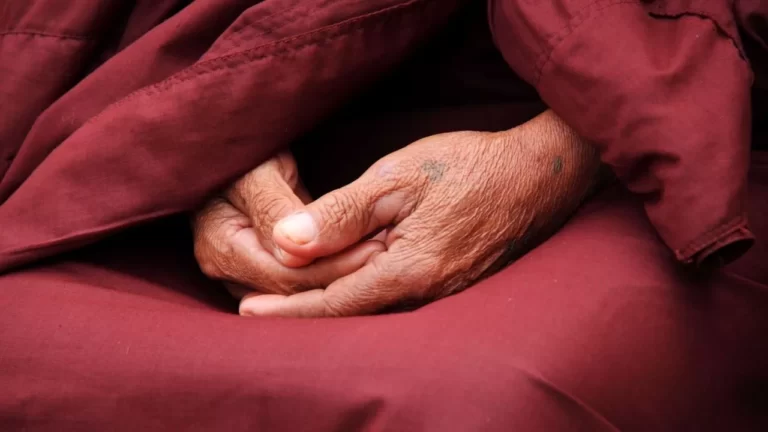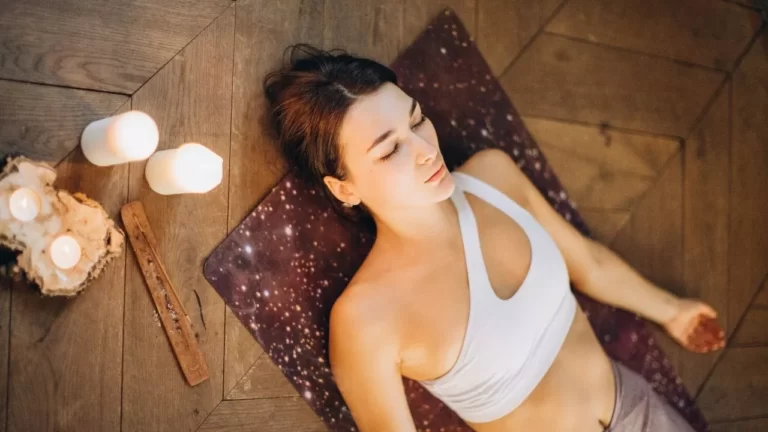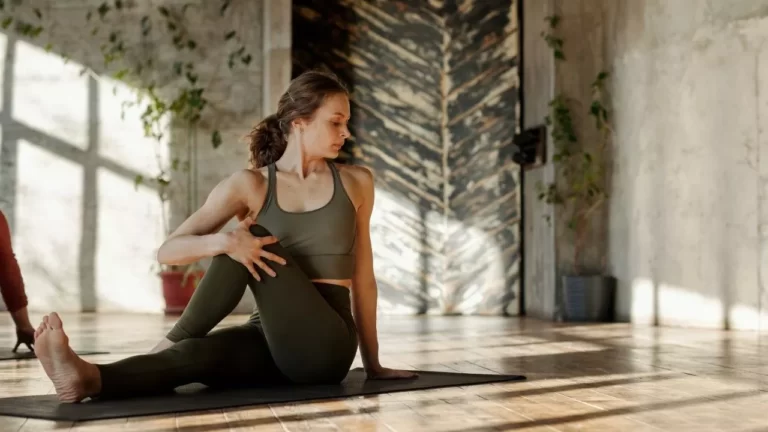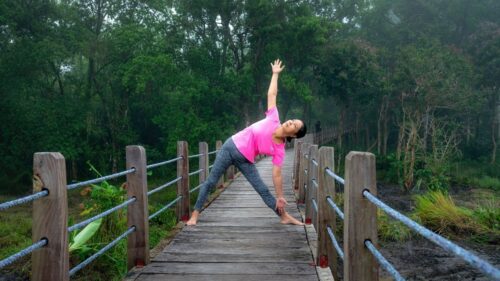Best Yoga routine for Beginners at Home in 2022
The reason for joining Yoga may vary from person to person but it is a great step in their life that is taken for physical and mental well-being.
Yoga routine for Beginners are always in confusion that where and how to get started? Which poses are good for me? etc.
Many people think that yoga is only physical activity and so they practice only asanas and many people use it for a spiritual purpose. They are unaware of other aspects of Yoga, which are equally important for physical as well as mental well-being. Here is our little try to share information on all aspects of Yoga practices, their sequence and poses, and their importance.
The sequence of Yoga routine for Beginners
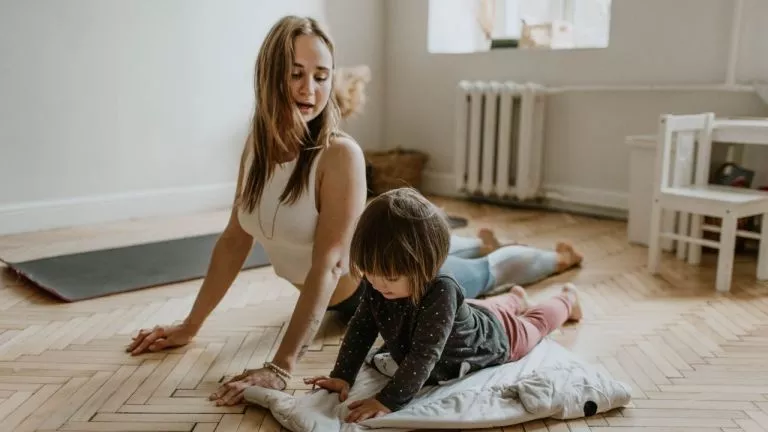
The sequence includes Sukshma Vyayam (micro exercises), Asanas (poses), Pranayama (Breathing techniques), Meditation, and Savasana.
Sukshma Vyayam (micro exercises)
It is nothing but micro exercises or gentle warm-up exercises from toes to head. You should do these exercises before practicing yoga asanas(poses). This will loosen your tight muscles or joints and make the body flexible and fit for asanas coming ahead.
A time for warm-up between 5 to 15 minutes, until your skin is warm to the touch and you can feel your heartbeat starting to elevate.
There are many exercises included in Sukshma Vyayam, here we are focusing on a few. You can do these exercises in sitting and standing positions also.
Leg joint movement– upward and downward, clockwise and anti-clockwise, inward and outward movement of toes and feet. Contraction and relaxation of the knee, bending of legs at the knee, butterfly flapping, etc. Do each movement 10 times.
Hand joint movement– open and close fists rotate fists clockwise and anti-clockwise, inward and outward movement of fists, up-down, back-forth movement of hands, stretch hands on either side and fold them to touch the shoulders, rotate shoulders clockwise and anticlockwise. Do these movements 10 times.
Neck and Head movement- up and down, clockwise and anticlockwise movement of neck and head. Also, do side bend till the ears can touch the respective shoulder. Put one hand on the forehead and another on the back and press them inward. Do each movement 5 times.
Other parts-
Eyes- Up and down, side to side movement, clockwise and anticlockwise rotation of eyeballs. Close eyes tight and open wide,
Ears- Close and open ears as well as stretch the ears in the upward and downward direction with the help of fingers
Cheeks- Open mouth wide. Stretch cheeks and relax
Teeth- Press upper series of teeth on lower series. Repeat all movements 10 times.
Asanas (Poses) for beginners
We often see many yogis or experts in difficult body-twisting poses. And it creates complexity in your mind when you cannot even touch your toes properly.
But don’t worry. It is your initial stage and remembers they got that place by doing yoga steadily and continuously.
You should begin with gentle practice until you have built up the strength and flexibility for challenging poses or sequences.
Here are some poses which are also base for Surya namaskar (Sun Salutation flow)
- Tadasan (mountain pose)
- Uttanasana (forward fold)
- Uttihita Chaturanga Dandasana (Plank Pose)
- Adho Mukh Savasana (Downward Facing Dog)
Tadasan (mountain pose)
Steps to do-
- Stand straight, breathe in and raise your toes gently, balance your body on your heels.
- Stretch your shoulders, chest, and arms upward. Feel the stretch in your body from the head to the feet.
- Hold this pose for about 5 to 10 seconds and then gently exhale.
Check more details in our blog “5 Easy Yoga Poses for Kids in a simple way”
Uttanasana (forward fold)
Steps to do-
- Stand straight, raise arms overhead. Sweep your arms down on either side of your body and come into a forward fold from your hips.
- Keep fingertips in line with the toes. Press your palms flat on the mat if possible.
- Slightly bend the knees so that they are not locked, let your head hang.
- Breath in and extend your chest to lengthen your spine
- Inhale, come up and place your hands onto your hips. Press the tailbone down and contract your abdominal muscles as you rise slowly.
Uttihita Chaturanga Dandasana (Plank Pose)
Steps to do-
- Lie on the stomach. Take your feet out wider than your hips. Put your palm near the shoulder.
- Press the palms and raise stomach, knee, and feet off the floor. Make plank with the support of hands and balls of feet.
- Hold this position for few seconds. Then lower your knees to the floor and lengthen back in to pose of the child.
Adho Mukh Savasana (Downward-Facing Dog)
Steps to do-
- Lie on the floor with stomach and face down.
- Keep your legs apart
- Press your palm and raise your body to make an inverted ‘V’ shape by moving your head inward and forwarding your feet.
- Deep breath and hold this pose for few seconds
- Come up to the initial position.
Check more details in our blog “8 Easy Yoga in Depression and Anxiety”
Pranayama (Breathing Technique)
Pranayam should be practiced after practicing asanas. Start it with OM (AUM) chanting. It creates vibrations within the body that makes the body ready for pranayama. Do it for 2 min.
There are many kinds of Pranayama. Here we are learning about Bhastrika Pranayama.
Bhastrika Pranayam
It is also known as yogic deep breathing. This is a simple but effective way to boost immunity and it energizes the body and calms the mind.
Method
- Sit straight in any comfortable position (Sukhasana, Padmasana, etc)
- Close your eyes and keep a smile on your face
- Place your palms on the knees facing upward.
- Inhale deeply and fill the air the lungs
- Exhale completely. Inhale and exhale ratio should be 1:1
Duration: begin by practicing this for 5 min and then increase gradually day by day
Meditation
It brings your mind to the present. It removes clutter from the mind. It improves mental well-being by removing stress.
Method
- Sit straight in any comfortable position (Sukhasana, Padmasana, etc)
- Close your eyes and keep a smile on your face
- Place your palms on the knees facing upward.
- Focus on your breathing and let your mind do whatever it wants
- Let the thoughts come and don’t resist it initially and letting them flow.
- Gradually, shift the focus on your inhalation and exhalation with your mind.
Savasana (Corpse Pose)
It is often done for relaxation of body and mind. You can do it at the end of a yoga session, in between asanas where rest is important, and before practicing pranayama. It cools the body which is heated during asanas practice.
Tips for Yoga Beginners
- Learn yoga from an experienced yoga instructor. Before practicing yoga, consult with a medical professional and yoga instructor if you have any medical condition.
- Avoid doing complicated yoga poses in the beginner’s stage. Stretch your body as much as you can. Don’t harsh on your body for twisting or stretching.
- Choose light and comfortable clothes which allow you easy movement while practicing yoga.
- Make Yoga a daily routine to gain a healthy body and mind.
Read More:
- 30-minute Morning Yoga Routine for Beginners
- 5 Easy Yoga Poses for Kids
- Yoga for Weight Loss Beginners
- Best Yoga for the Knee Pain
- Easy Yoga in Depression and Anxiety
Conclusion
Every step of the Yoga sequence has its own importance. If you have don’t have sufficient time, do warmup for 5min, practice only one or two asanas for 10 min (you can also practice a set of Surya namaskar for 5 times), Pranayama, and meditation for 10 min and relax in Savasana for 5 min.
before practice, you should consult with the medical practitioner and experienced yoga instructor. They will modify the steps of yoga sequences for you.
FAQ:
Q. Which time is good for yoga practice?
Ans. The best time to practice yoga is early in the morning on an empty stomach. You can also do it in the evening before dinner.
Q. Why mat is used during yoga practice?
Ans. The yoga mat is used to avoid earthing of energy generated in the body during the yoga practice.
Q. How can I manage all the steps of the yoga sequence if I have less time for practice?
Ans. Daily practice of yoga sequence for 20 min is better than long hours occasional sessions. Be regular and consistent.
Q. Do I have to be flexible to learn Yoga?
Ans. No. You need not be flexible to learn yoga but yoga is a great way to make you flexible.
